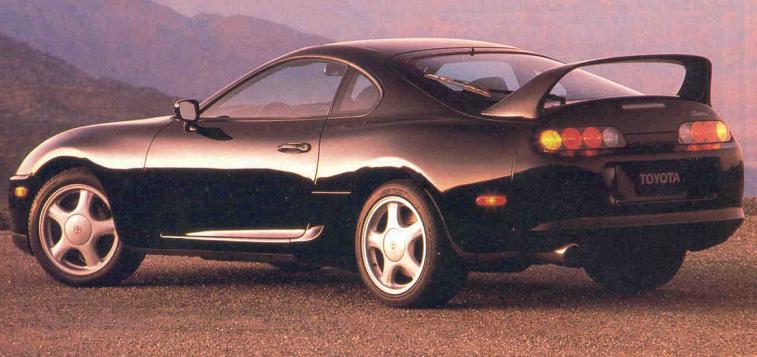
| Car Magazine |
|---|
| A Supracar |
Toyota's Isao Tsuzuki doesn't have the word 'fanatic' engraved on his business card but he definitely deserves such an appellation. The 48-year-old engineer was assigned responsibility for the new 1993 Supra three years ago after earning his stripes as assistant chief engineer on the past two generations of the Toyota MR2. Without apology, he reveals the philosophy behind the newest Japanese motor missile: 'We conceived the 1993 Supra as a race car that could be enjoyed and driven with confidence on American streets and highways.' Tsuzuki's voice tingles as he explains his desire to nurture a 'real' sports car in an age when safety and environmental concerns dominate every new car design. He insists that a real sports car is comprised of spirit and sex appeal in equal amounts; if dual airbags and a catalytic converter must also be provided. then so be it. 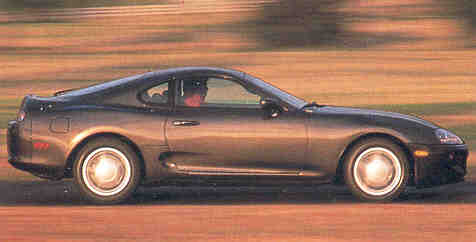
While the sex appeal of the new Supra is a matter of taste, Isao Tsuzuki has certainly succeeded with the spirit part of the equation. By pumping the 24-valve 3.0 litre in-line six cylinder engine (introduced in the 1992 Lexus SC300) to an impressive 320bhp with sequential twin turbochargers and by trimming more than 300lb from the previous Supra's kerb weight, Tsuzuki has delivered a safer and more fuel efficient sports car that also manages to beat the power-to-weight ratio of the Ferrari 348. Fanatical attention to detail was the key. Team Tsuzuki's weight reduction plan was aptly called 'will power'. In a phenomenal 950 meetings during the final two years of development - they would sometimes have as many as three per day - they whittled away at kerb weight. In addition to the usual measures (such as the use of ar aluminium bonnet and a plastic fuel tank) the engineers hollowed out everything from the anti-roll bars to the carpet fibres. Electronic shock absorbers, dual exhaust, and telescopic steering were deemed frivolous. In their place, Tsuzuki heaped on what he calls , simple and highly refined' technology: four channel ABS with huge spiral-vented rotors and opposed piston front calipers, a Getrag six-speed manual transmission, a Torsen limited-slip differential, 17in wheels, and wide Z rated tyres. 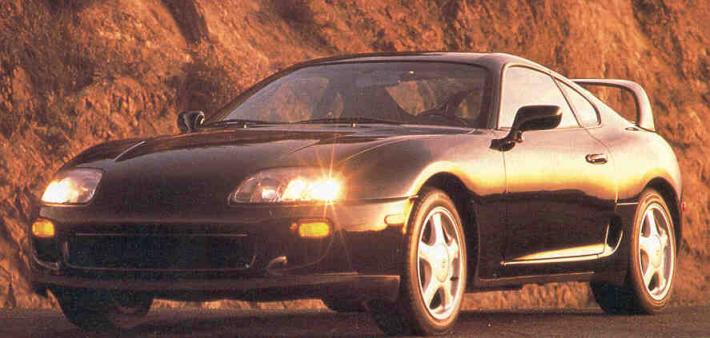
The cockpit is a tight 2+2 configuration thanks to a high beltline, a stylishly flat windscreen, and a roofline that tightly caps the front passengers heads. In the rear are what are best regarded as theoretical seats, intended only to stretch the Supra s limited market appeal. The steering column low and nearly horizontal, minimising the reach to the top of the leather-gloved, airbag equipped four spoke wheel. The dash, in the BMW fashion. wraps towards the driver and presents an unusual mix of round and rectangular vents and controls on an austere black background. An 80OOrpm tachometer is positioned dead centre and marked with a 68OOrpm red line. To the right, a smaller speedometer climbs to 180mph in 20mph increments, A large centrally located, all purpose warning lamp allows the driver to keep his attention focused on the road ahead. 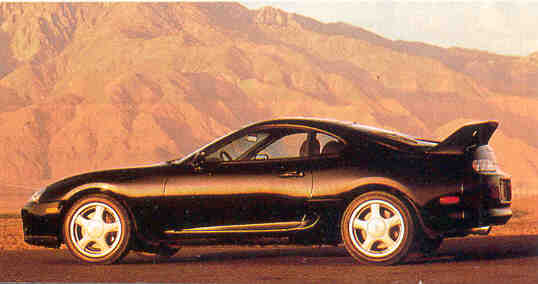
Since the Supra doesn't go on (worldwide) sale until June, driving opportunities were restricted to pre-production prototypes at the Atlanta Motor Speedway. In compensation, Juan Manuel Fangic 11. the recently crowned IMSA GTP champion, provided a 150mph introduction to both the car and NASCAR's 1.5-mile steeply banked bullring. A 2.5 mile road course snakes through the infield and this is where American motor reporters challenged the new Supra's limits. The smooth six under the long, low bonnet purrs innocently at idle and responds lazily to a poke of the throttle until exhaust flow spurs the turbos to action. Even though the shift linkage is carried by ball bearings, the effort required to change gear is substantial. Tight damping calibrations, hefty anti-roll bars, and generous amounts of anti-dive and anti-squat compensation keep the Supra Turbo poised without punishing occupants over rough roads. The wide rear tyres soak up heavy throttle indulgences without a whimper. 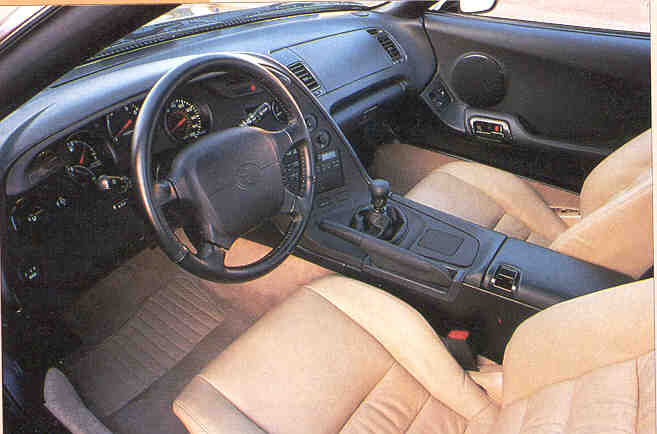
According to the factory, the speedometer will race to 60mph in 5.1 seconds on the way to a governed top speed of 155mph, and these are entirely credible claims. But more impressive than the Ferrari-beating acceleration is the Supra's unshakable stability, There are traces of understeer before a sweeper's apex and hints of oversteer upon exiting a tight bend with the boost up and the throttle locked to the floor. But those signals fall under the heading of useful dialogue from the chassis rather than veiled threats. For the most part, the Supra charges with consummate grace. When it does eventually slide wide, the breakaway is so mild and predictable that lifting off the throttle isn't an essential corollary of steering corrections. Prices haven't been announced, but the Turbo is likely to cost about $38,000 in the States (a 220hp normally aspirated sister, not expected in the UK, may slip in under $30,000). Of course, Brits will have to pay more than that when the car goes on sale here in the second half of this year - at least £35,000. Vitals:
|
Back to Home Page